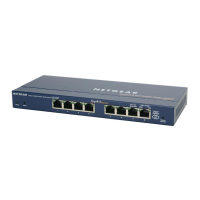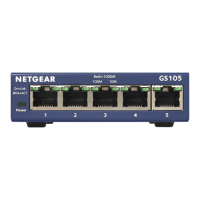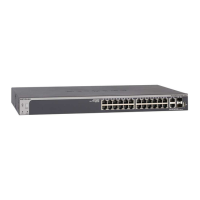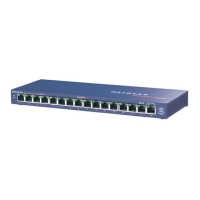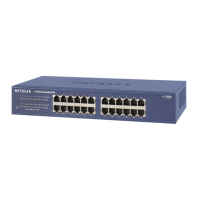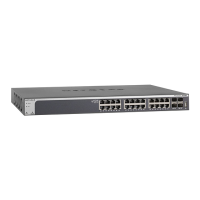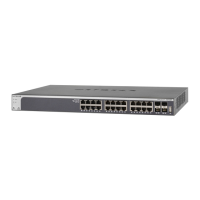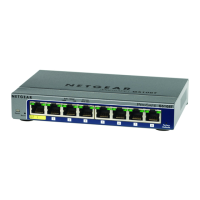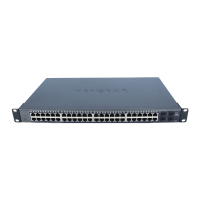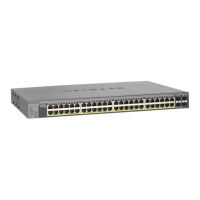4-1
v1.0, February 2010
Chapter 4
Quality of Service Configuration
There are many different classes of data that can be sent across a network. Depending on the volume of
traffic on the network and the capacity of the equipment in the network, data can be delayed, or lost and
retransmitted before reaching its destination. Normally this is not a problem since the data is reassembled at
the destination. If the data consists of text or numeric data to be stored on the destination computer, the user
would not notice the delay. But if the data was voice, streaming video, or other delay sensitive data, delays
would be undesirable. Video sequences would be jerky and voice communication would have annoying
gaps.
The QoS (Quality of Service) feature in the ProSafe
®
Plus switches allows you to control the flow of data
passing through the switch.
• QoS global configuration assigns priorities to data.
• Rate Limit sets limits on transmission rates for data passing through the switch.
• Broadcast Filtering blocks mass transmissions of broadcast packets from being forwarded to all ports.
All of the QoS features have default settings. It is not necessary to configure any settings in order to use the
ProSafe
®
Plus switches. The following table lists the default settings.
Table 4-1. QoS Default Settings
Feature Setting
Global Configuration
QoS Mode Port based
Port Priority Low priority for each port
Rate Limit
Ingress No limit
Egress No limit
Broadcast Filtering Disabled
